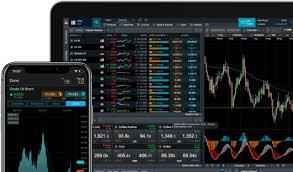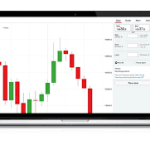Risk Management Strategies for Successful CFD Trading
Contract for Difference or CFD trading is a popular form of trading that allows individuals to trade in various financial instruments without actually owning them. CFD trading is often used to trade in stocks, commodities, indices, and currencies. However, CFD trading can be complex and volatile. Therefore, it is essential that beginners understand the basics of CFD trading before they begin trading. In this blog, we will provide you with a comprehensive guide to CFD trading that will help beginners navigate the complexities of CFD trading.
What is CFD trading?
CFD trading is essentially an agreement between two parties to exchange the difference between the opening and closing prices of a financial instrument. The parties don’t actually own the underlying asset. For example, if you believe that the price of a stock will increase, you could buy a CFD for that stock. If the price of the stock increases, you make a profit. If it decreases, you make a loss. CFDs are popular for their flexibility as they allow traders to go long or short on a trade.
Advantages of CFD trading:
There are several advantages of CFD trading that make it popular among traders. One of the biggest advantages is leveraged trading. With leveraged trading, traders are able to control large positions with a relatively small amount of capital. This allows traders to profit from small price movements in the underlying asset. Additionally, CFDs are easy to trade and offer flexibility in trading hours.
Risks of CFD trading:
While CFD trading offers several advantages, it is important to understand the risks involved before you begin trading. One of the biggest risks is the volatility of the market. CFD trading is subject to price fluctuations, and it is important to use risk management tools to mitigate losses. Additionally, leverage magnifies both profits and losses. Therefore, traders must be careful when using leverage and use it only when necessary.
CFD trading strategies:
There are several CFD trading strategies that traders can use to make profitable trades. One popular strategy is trend trading, where traders follow the trend of a stock or asset. Another strategy is swing trading, where traders hold positions for a few days or weeks. Finally, scalping is a popular strategy for traders that hold positions for a few minutes or seconds.
Factors to consider before trading:
Before you begin trading CFDs, there are several factors that you should consider. Firstly, you should choose a reputable broker that is regulated. Secondly, you should educate yourself on the market and the risks and advantages of CFD trading. Additionally, you should have a trading plan in place that details your approach to trading and your risk management strategy.
Conclusion:
cfd trading is a popular way to trade in various financial instruments, but beginners should understand the basics before they begin trading. In this blog, we have provided a comprehensive guide to CFD trading that covers the basics of CFD trading, advantages, risks, strategies, and factors to consider before trading. By following these guidelines, beginners will be able to navigate the complexities of CFD trading and make profitable trades.


